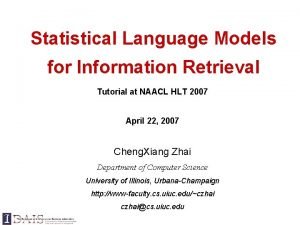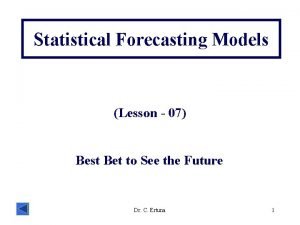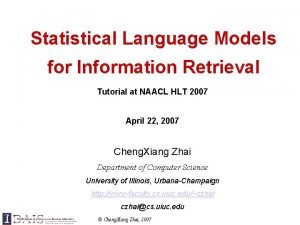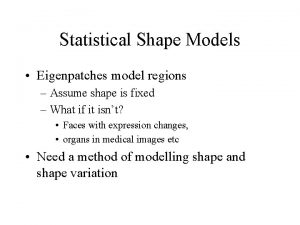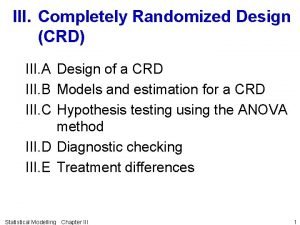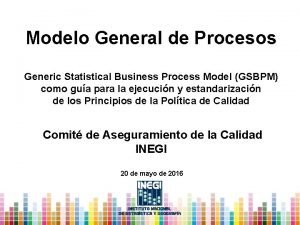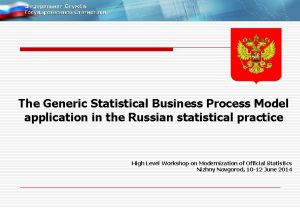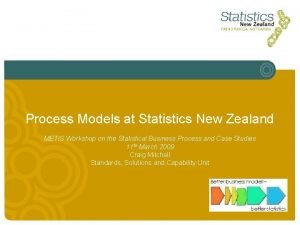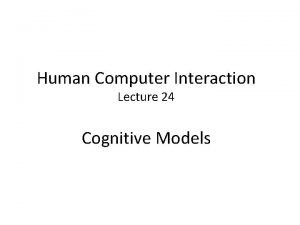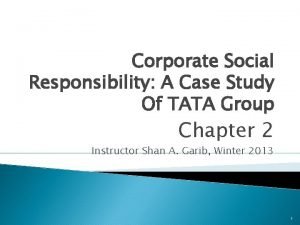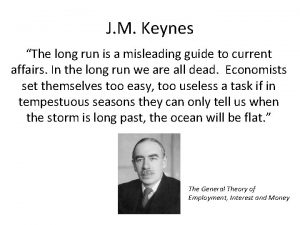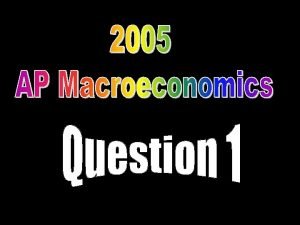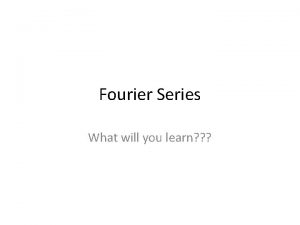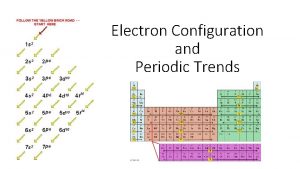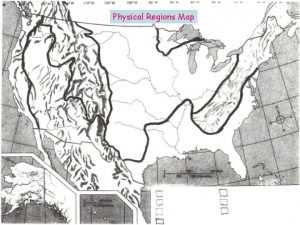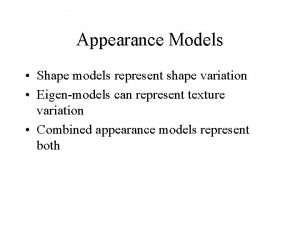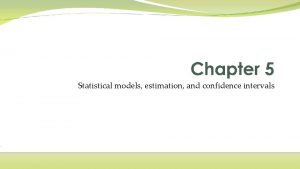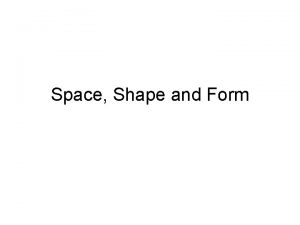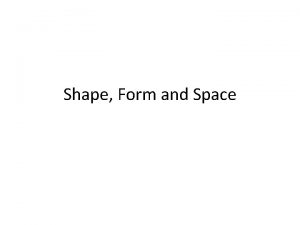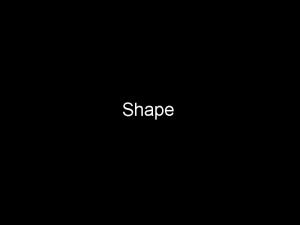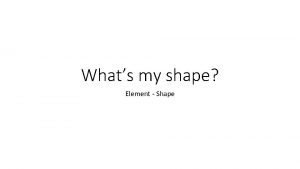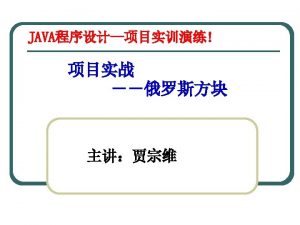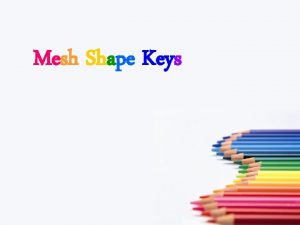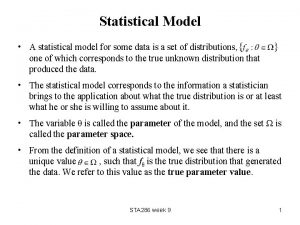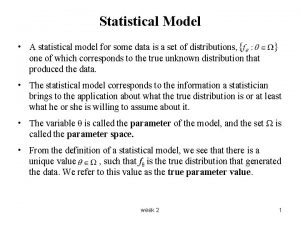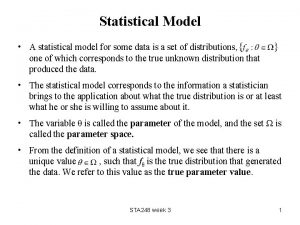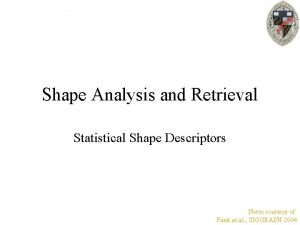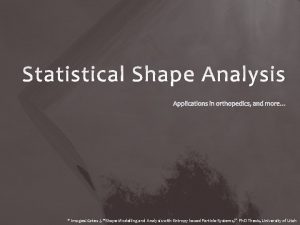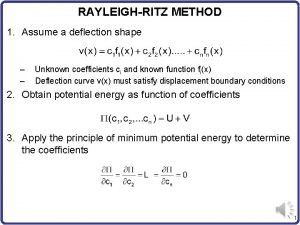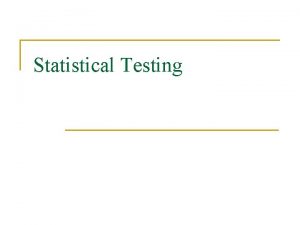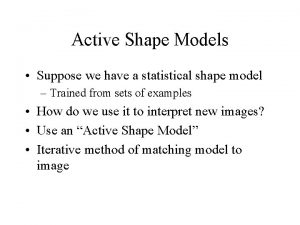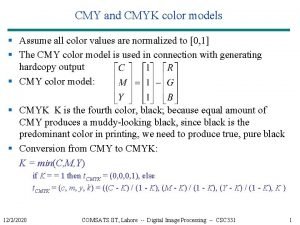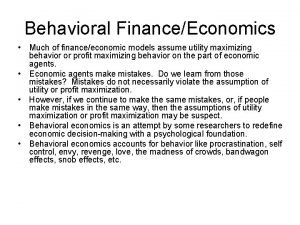Statistical Shape Models Eigenpatches model regions Assume shape


























- Slides: 26

Statistical Shape Models • Eigenpatches model regions – Assume shape is fixed – What if it isn’t? • Faces with expression changes, • organs in medical images etc • Need a method of modelling shape and shape variation

Shape Models • We will represent the shape using a set of points • We will model the variation by computing the PDF of the distribution of shapes in a training set • This allows us to generate new shapes similar to the training set

Building Models • Require labelled training images – landmarks represent correspondences

Suitable Landmarks • Define correspondences – – Well defined corners `T’ junctions Easily located biological landmarks Use additional points along boundaries to define shape more accurately

Building Shape Models • For each example x = (x 1, y 1, … , xn, yn)T

Shape • Need to model the variability in shape • What is shape? – Geometric information that remains when location, scale and rotational effects removed (Kendall) Same Shape Different Shape

Shape • More generally – Shape is the geometric information invariant to a particular class of transformations • Transformations: – Euclidean (translation + rotation) – Similarity (translation+rotation+scaling) – Affine

Shapes Euclidean Similarity Affine

Statistical Shape Models • Given a set of shapes: • Align shapes into common frame – Procrustes analysis • Estimate shape distribution p(x) – Single gaussian often sufficient – Mixture models sometimes necessary

Aligning Two Shapes • Procrustes analysis: – Find transformation which minimises – Resulting shapes have • Identical Co. G • approximately the same scale and orientation

Aligning a Set of Shapes • Generalised Procrustes Analysis – Find the transformations Ti which minimise – Where – Under the constraint that

Aligning Shapes : Algorithm • • • Normalise all so Co. G at origin, size=1 Let Align each shape with m Re-calculate Normalise m to default size, orientation Repeat until convergence

Aligned Shapes • Need to model the aligned shapes

Statistical Shape Models • For shape synthesis – Parameterised model preferable • For image matching we can get away with only knowing p(x) – Usually more efficient to reduce dimensionality where possible

Dimensionality Reduction • Co-ords often correllated • Nearby points move together

Principal Component Analysis • Compute eigenvectors of covariance, S • Eigenvectors : main directions • Eigenvalue : variance along eigenvector

Dimensionality Reduction • Data lies in subspace of reduced dim. • However, for some t,

Building Shape Models • Given aligned shapes, { } • Apply PCA • P – First t eigenvectors of covar. matrix • b – Shape model parameters

Hand shape model • 72 points placed around boundary of hand – 18 hand outlines obtained by thresholding images of hand on a white background • Primary landmarks chosen at tips of fingers and joint between fingers – Other points placed equally between 6 5 4 3 2 1

Hand Shape Model

Face Shape Model

Brain structure shape model

Example : Hip Radiograph

Spine Model

Distribution of Parameters • Learn p(b) from training set • If x multivariate gaussian, then – b gaussian with diagonal covariance • Can use mixture model for p(b)

Conclusion • We can build statistical models of shape change • Require correspondences across training set • Get compact model (few parameters) • Next: Matching models to images
 Statistical language models for information retrieval
Statistical language models for information retrieval Statistical forecasting models
Statistical forecasting models Statistical language models for information retrieval
Statistical language models for information retrieval Assume shape
Assume shape What is the difference between modals and semi modals?
What is the difference between modals and semi modals? Completely randomized design (crd)
Completely randomized design (crd) Modelo general de procesos
Modelo general de procesos Uiiss
Uiiss Generic statistical business process model
Generic statistical business process model Drag divergence mach number
Drag divergence mach number Shape matching and object recognition using shape contexts
Shape matching and object recognition using shape contexts Template matching
Template matching Model-netics 151 models
Model-netics 151 models Task action grammar is based upon bnf
Task action grammar is based upon bnf Case study on csr of tata
Case study on csr of tata Always assume positive intent
Always assume positive intent Gbc entrepreneurship management
Gbc entrepreneurship management Origami japanese spiny lobster
Origami japanese spiny lobster Never assume always ask
Never assume always ask Assume that a firm produces output using one fixed input
Assume that a firm produces output using one fixed input Lsaiso
Lsaiso Assume the economy of andersonland
Assume the economy of andersonland Assume breach
Assume breach Assume
Assume Many people assume that
Many people assume that Fourier series
Fourier series Rules governing electronic configuration
Rules governing electronic configuration
